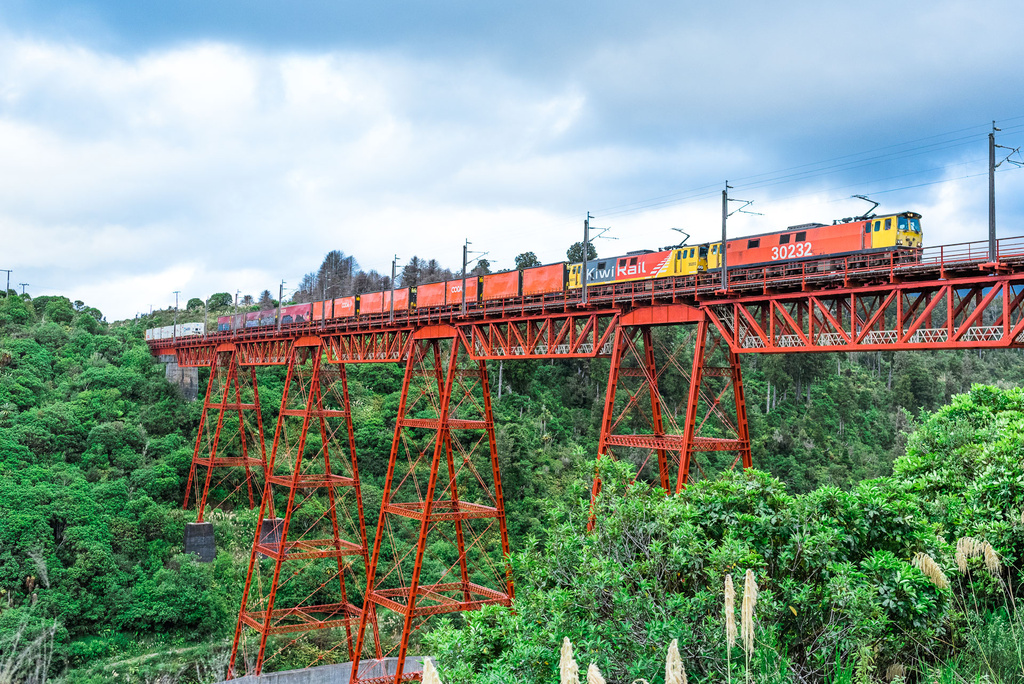Whangarei
17.89°C

Whangarei
17.89°C

Waitakere City
16.98°C

Manukau City
17.11°C

Papakura
24.46°C

Hauraki
17.26°C

Waikato
17.67°C

Matamata
18.46°C

Hamilton
17.51°C

Otorohanga
18.52°C

Rotorua
16.6°C

Taupo
15.44°C

Tauranga
19.27°C

Kawerau
18.6°C

Whakatane
19.64°C

Gisborne
15.51°C

New Plymouth
16.98°C

Stratford
8.97°C

Ruapehu
14°C

Wanganui
17°C

Palmerston North
16.41°C

Wairoa
19.19°C

Hastings
18.84°C

Napier
18.49°C

Masterton
15.49°C

Carterton
15.66°C

Porirua
15.99°C

Lower Hutt
16.45°C

Wellington
15.79°C

Tasman
9.35°C

Nelson
16.27°C

Marlborough
3.22°C

Kaikoura
15.48°C

Christchurch
12.59°C

Ashburton
12.52°C

Timaru
13.37°C

Waitaki
11.32°C

Waimate
13.08°C

Queenstown
12.38°C

Dunedin
14.33°C

Southland
9.98°C

Gore
11.31°C

Invercargill
12.06°C

Blenheim
14.73°C

Te Anau
27.35°C

Wanaka
11.17°C

Kaikoura
13.38°C

Stratford
13.54°C

Upper Hutt
15.9°C

About
The South Island main trunk line linked Christchurch and Dunedin by 1878 and was extended to Invercargill the next year, but another three decades would pass before engineers and politicians could overcome the opposition of King Country Māori and the forbidding central North Island terrain to complete the northern equivalent. Until then anyone wanting to travel from Auckland to Wellington either took a steamer down the east coast or sailed from Onehunga to catch the Wellington train at New Plymouth.
Christchurch firm J. & A. Anderson won the Makatote construction tender in 1905. The site was forbidding, 792 m above sea level amid thickly forested hills. Storms, floods and shortages of cement and skilled labour made things worse. Anderson set up a fully equipped workshop and brought in 1238 tonnes of cement and 1016 tonnes of steel by wagon from the railhead. Using a cableway stretched across the gorge between timber gantries, they had the viaduct ready by July 1908. Soon trains began rolling uninterrupted between Auckland and Wellington, transforming travel in the North Island and turning the government railway into a modern main-line system. Passenger numbers soared from 3.5 million in 1895 to 13.3 million in 1913 and freight carried rose from 2 million tonnes in 1895 to almost 3.9 million tonnes in 1913.
The Makatote Viaduct is not our longest railway viaduct, but still offers some impressive statistics: it is 262 m long and 79 m high. There are six concrete and five steel piers. Twenty-three major viaducts and 26 bridges made the North Island main trunk an impressive project by any standards. When the American Society of Civil Engineers awarded the line its 27th International Historic Civil Engineering Landmark Award in 1997, it joined the Statue of Liberty, the Eiffel Tower and the Panama Canal on a very select list. Just south of the viaduct, the Last Spike Monument marks the spot where Sir Joseph Ward drove the final spike into the line on 6 November 1908.
